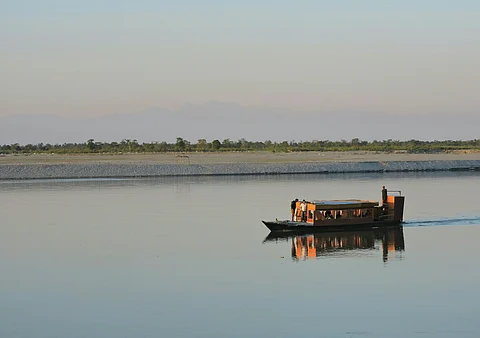
- Destinations
- Experiences
- Stay
- What's new
- Editor’s Picks
- Responsible Tourism
- CampaignsCampaigns
- Subscribe

Beyond its misty hills, sparkling rivers and unique tribal cultures, Northeast India has a lot more to offer. With some of India's most diverse wildlife sanctuaries and ecosystems, the area is a haven for anyone who appreciates the outdoors and wildlife. Northeast India's protected regions, which range from lush rainforests to alpine environments, provide sanctuary to rare and endangered species, many of which are exclusive to the area. Here is a selection of the top wildlife reserves in Northeast India that tourists should not miss.
The most popular wildlife sanctuary in Northeast India is probably Kaziranga National Park, a UNESCO World Heritage Site. Its forests, wetlands and grasslands, which sprawl over the Brahmaputra River's floodplains, are home to tigers, elephants and the largest number of Indian one-horned rhinoceroses in the world. Dolphins from the Ganges River swim in the park's waters. Many uncommon migratory species frequently visit it, and grey pelicans nest close to the Kaziranga settlement.
The best time to visit Kaziranga National Park is from November to April. Early morning safaris are your best chance to spot rhinos in their natural habitat, as they are most active at dawn.
Dibru-Saikhowa is one of India's few riverine national parks and is well-known for its breathtaking scenery and abundant biodiversity. Situated in the floodplains of the Brahmaputra and Lohit rivers, the park is home to over 380 different kinds of birds, Asiatic water buffaloes, river dolphins and endangered feral horses. The place intrigues nature lovers because of its distinctive environment, which combines deep forests, meadows and wetlands.
The best time to visit Dibru-Saikhowa National Park is from November to April. Opt for a boat safari in the early morning or late afternoon to witness the dolphins and catch a glimpse of the park’s elusive feral horses.
Arunachal Pradesh's Mehao Wildlife Sanctuary is an unexplored gem with beautiful scenery that includes alpine lakes and thick tropical jungles. This sanctuary in the Lower Dibang Valley is home to a wide variety of birds, red pandas, rare orchids and clouded leopards. Trekkers and nature lovers are equally drawn to Mehao Lake, one of the sanctuary's main attractions due to its pristine water.
The best time to visit Mehao Wildlife Sanctuary is from October to March. The terrain can be challenging, so wear comfortable trekking shoes and plan for a guided trek.
One of Mizoram's undiscovered gems is the Dampa Tiger Reserve, which provides an excursion into lush tropical forests. It lies near the Myanmar border and is home to a number of interesting species, such as hoolock gibbons, clouded leopards and golden cats. Despite the rarity of tiger sightings, the experience is gratifying due to the vast bird diversity and rich forests. The site was declared a tiger reserve in 1994 and is part of Project Tiger. However, the Dampa Tiger Reserve is not easily accessible unlike other parks where you can ride on a four-wheeler; one has to walk through the forest if one wishes to see animals. Dampa is a great place for people who want to get away from it all because of its serene surroundings and isolated beauty.
The best time to visit the Dampa Tiger Reserve is from November to March. The reserve is quite remote, so it’s advisable to stay in nearby towns and arrange travel permits in advance.
Sangti Valley is a must-see for nature lovers and birdwatchers, despite not being a typical wildlife sanctuary. The valley, which is close to Dirang, serves as a temporary refuge for the endangered black-necked crane, which comes here for the winter. For visitors wishing to explore some of Northeast India's lesser-known natural treasures, this picturesque valley is surrounded by mountains of snow and filled with apple orchards, providing a serene and distinctive wildlife experience.
The best time to visit the Sangti Valley is from November to February. Winter is ideal for birdwatching; consider a homestay to enjoy local hospitality and culture.
Manas National Park is an elephant reserve and a Project Tiger habitat. It is situated in the foothills of the Himalayas and shares a border with Bhutan's Royal Manas National Park. Rare and endangered endemic species, including the Assam roofed turtle, hispid hare, golden langur and pygmy hog, are among the park's most well-known wildlife. Additionally, it is home to the world's only known pygmy hog population. The wild water buffalo population in Manas is another reason for its fame. This UNESCO World Heritage Site is a must-visit due to its remarkable biodiversity, landscape and range of habitats.
The best time to visit Manas National Park is from October to April. For a unique experience, take a raft down the Manas River and keep an eye out for the varied birdlife along its banks.
